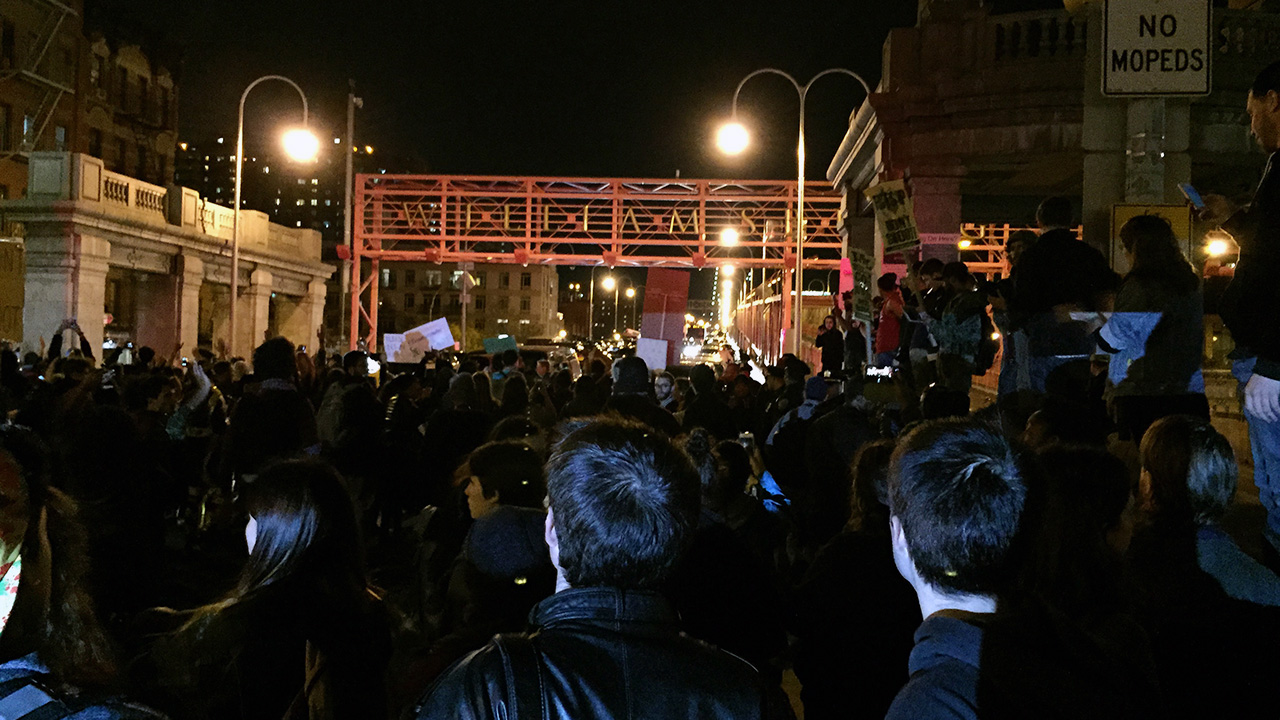According to Al Jazeera, there’s a reason why New York City has become the “focal point for recurrent demonstrations over the last couple of weeks” that extends beyond the sheer amount of people (whether they be Occupy holdouts or National Action Network members) and injustices committed by the nation’s largest police force. Writer Jathan Sadowski explains the city has an “architecture of dissent.” Here are some of the traits that make New York a protester’s playground:
Mass transit
New York’s prolific mass transit system serves as an efficient means to move lots of people around, an important requirement for maintaining protests.
Venues
Places like Macy’s and Grand Central Terminal provide for exceptional die-in opportunities; they’re highly trafficked and indoors, so actions there aren’t dependent on the weather.
Public Space
There are lots of favorable locations —Union Square, Washington Square, the pedestrian areas in Times Square — where large crowds can stage actions from.
Iconic infrastructure
For protesters looking to make a splash, there are all sorts of choice structures that can be shutdown, allowing protesters to amplify their messaging every time they over take the Brooklyn Bridge or the FDR Drive or other major arteries.
Now, compare all that to a depressing city place Phoenix, where cars are necessary and communities are geographically cut off from urban centers. There’s virtually no protest movement going on there and a lot has to do with the way that city is laid out:
For instance, consider Phoenix, which has a nearly opposite structure and flow from New York’s — sprawling, decentralized, horizontal, drivable — which gives rise to a vastly different architecture for dissent. I live in Phoenix, and even though it is the sixth-most-populous city in the nation, its bodily response to the nationwide protests has been relatively silent. And that’s not for a lack of people who are fired up with passion, concern and anger about the issues motivating these protests. Earlier this month, in fact, Phoenix experienced its own incident in which an unarmed black man, Rumain Brisbon, was killed by a white officer who thought he had a gun.
Phoenix did not see the large protests of other cities because it is not built for humans; it’s built for private vehicles. People just happen to live there. This character of the city closes off opportunities for civic action by isolating — and disempowering — people, leaving them with little or no opportunity for gathering in solidarity. Many people, especially those in marginalized communities, live in neighborhoods and towns that are effectively restricted from accessing large parts of the city. And the flows of activity in Phoenix are such that the downtown becomes a ghost town after 5:00 p.m. and on weekends, when people hop on the highway and retreat to their homes. So even if protesters managed to gather and march, they would be chanting at empty streets and closed buildings.
The takeaway: Don’t protest in Phoenix, or ever bother going there.
(Photo: Bucky Turco/ANIMALNewYork)



